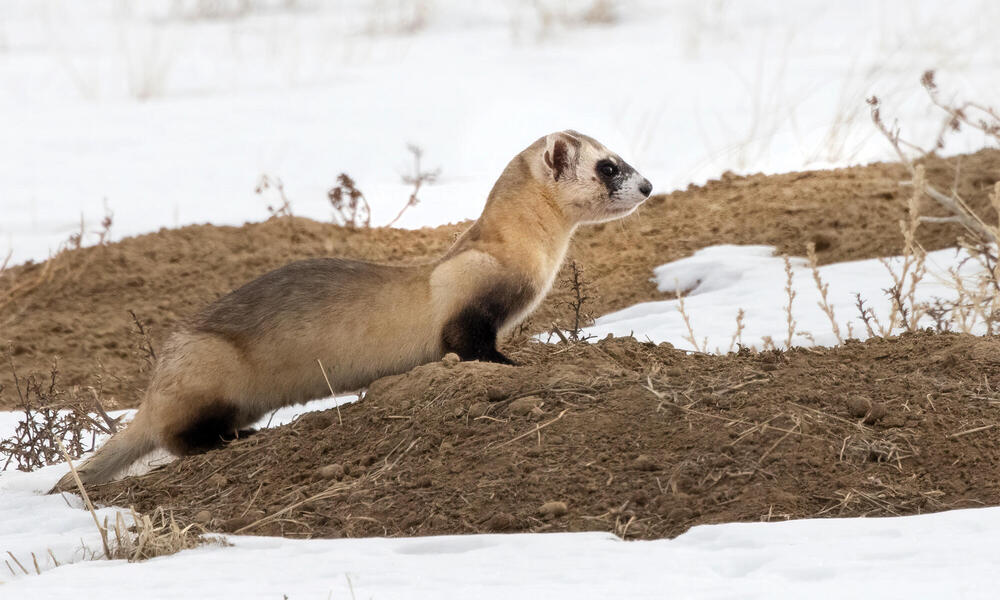Black-footed ferret
The black-footed ferret, scientifically known as Mustela nigripes, is a species of mustelid that inhabits North America, specifically the Great Plains of the United States. Here I will provide you with information about its habitat, its life, its diet, its reproductive process and the reasons for its threatened extinction.
Habitat:
Black-footed ferrets inhabit the Great Plains of North America, a region encompassing parts of the states of Montana, South Dakota, Wyoming and Canada. This habitat is characterized by vast prairies, grasslands and sandy soils. Black-footed ferrets live in burrows dug by other animals, such as those of prairie squirrels, which they use for shelter.
Lifestyle:
Black-footed ferrets are nocturnal and solitary animals. They are agile hunters and feed mainly on small mammals, such as prairie squirrels, mice and other rodents. They spend most of their time inside burrows and use their hunting skills to trap prey in their subway tunnels.
Diet:
The diet of black-footed ferrets consists mainly of small mammals. Their main prey is the prairie gopher, but they may also consume mice, moles and other plains-dwelling rodents. Black-footed ferrets are efficient hunters and key predators in their ecosystems.
Reproduction:
The breeding season for black-footed ferrets generally occurs in the spring. Females give birth to litters of about three to five pups after a gestation period of approximately 42 days. The pups are born blind and are completely dependent on their mother for survival. After a few weeks, they begin to open their eyes and are weaned by their mother before learning to hunt on their own. Black-footed ferrets reach sexual maturity at an age of one year.
Threats of extinction:
Black-footed ferrets face serious threats that have brought them to the brink of extinction:
Habitat loss: Conversion of grasslands to cropland and human development has resulted in the degradation and fragmentation of their natural habitat. This limits their availability of burrows and prey, which negatively affects their survival.
Diseases: Black-footed ferrets are vulnerable to flea- and tick-borne diseases, such as plague. The introduction of diseases by domestic and farm animals can decimate wild populations.
the ferret is an animal that depends on prairie squirrels, that is why when these animals disappear, so we have to prevent these squirrels from disappearing.

Comentarios
Publicar un comentario